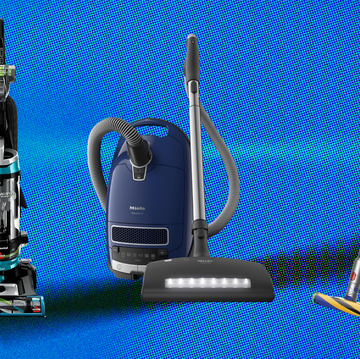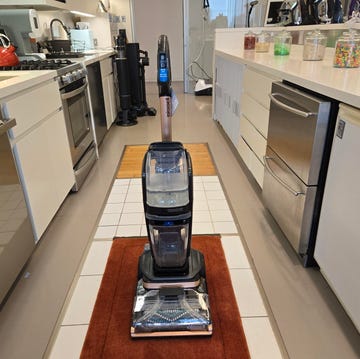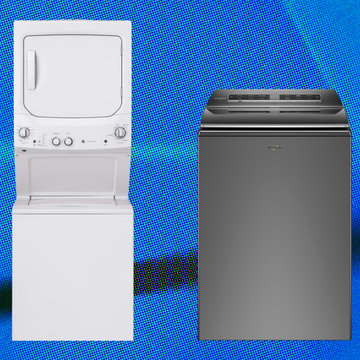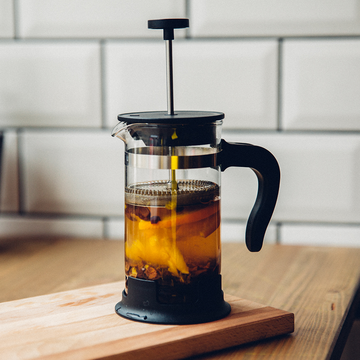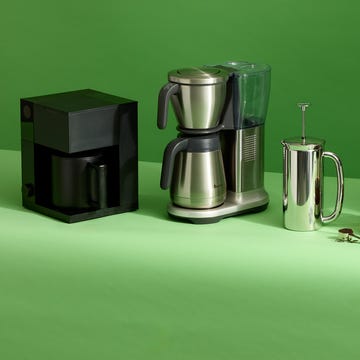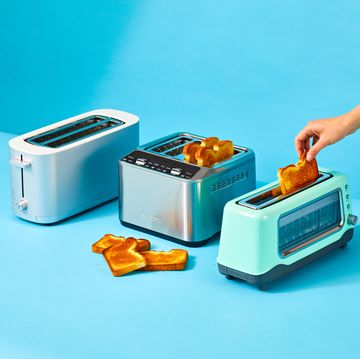As an analyst in the Kitchen Appliances and Innovation Lab in the Good Housekeeping Institute, I've tested almost 50 full-sized blenders and personal blenders in the last three years, including almost 10 Vitamix blenders. So when Vitamix blenders recently announced that they would be "launching its most advanced product line ever, the new Ascent X Series," I was more than intrigued to get my hands on a model.
The new Vitamix Ascent X Series includes four blenders: X2, X3, X4 and X5. Over the last few weeks, our team tested out the X2 and X5 models in our Lab before they hit the market. We made strawberry kale smoothies, margaritas, broccoli-leek soup, vanilla milkshakes and peanut butter, and put the cleaning function to the test.
What's unique about the Vitamix Ascent X Series?
When testing this new line, we decided to focus on two models: the most affordable option, the Ascent X2, priced at $549.95, and the feature-rich Ascent X5, which retails for $749.95.
Vitamix Ascent X2
This blender, along with all of the other models in this line, features recipe programs, a self-cleaning program, a new 48-ounce container with soft-grip handle, built-in wireless connectivity, variable speed control, pulse and digital timer.
While all Vitamix blenders come with tampers (a long plastic tool that helps process thick and frozen ingredients by pushing them down into the blender blades), the Ascent X series comes with a tamper holder on the side of the blender base for easy storage. The user interface of this model is smooth with a dial in the center and two switches on either side.
You can clearly see the soup, frozen dessert, smoothie, cleaning programs and variable speed control on the interface without even having to turn on the blender. Once turned on, you can see the timer lit up boldly at the top of the interface.
Vitamix Ascent X5
Along with the Ascent X4, this model includes technology that alerts you to use your tamper during thicker blends and when your blender is overheating; it alerts you with an icon that appears on the digital interface. There is also a +15 seconds button and an included recipe booklet.
This model in particular features smoothie, frozen dessert, soup, dips and spreads, frozen cocktail, smoothie bowl, frappé, nut butter, non-dairy milk, spice grinding and cleaning programs, offering a vast assortment of programs for a variety of beverages and dishes. It features a smooth user interface with a single dial in the center and once the blender is turned on you can rotate the dial to show you the various programs to choose from.
How we tested
In the Good Housekeeping Institute Kitchen Appliances and Innovation Lab, we’ve tested more than 100 blenders over the past decade. When we test blenders in our Lab, we follow the same standardized recipes and testing procedures to see how they stand out among the rest. When it came to testing out the Vitamix Ascent series we followed suit.
- Strawberry kale smoothie test: To help mimic how a home consumer would use a blender, we made strawberry kale smoothies using the blender's smoothie preset. To see how evenly blended the final product is, each smoothie is put through a fine mesh sieve after it is blended to see how many chunks weren't blended. For both models, their smoothie results were creamy and smooth in texture with a very slight amount of kale flecks throughout.
- Frozen Margarita test: During Lab testing we use the same frozen margarita recipe we've been using for decades and strain the final product through a mesh sieve to evaluate whether all ingredients are fully blended and whether each grind or puree is uniform. Both blenders produced high scoring margaritas that were very silky, fluffy and smooth with no grit when we used each blender's designated preset. Our whole Lab was impressed with how tasty these frozen cocktails turned out.
- Milkshake test: We blend up a pint of vanilla ice and milk to see how frothy and creamy a milkshake whips up in a blender or if it ends up curdled and separated instead. Both milkshakes were frothy, but slightly curdled and separated, with the X5 yielding slightly better results. We used each blender's frozen dessert preset.
- Broccoli leek soup test: To see how well a blender can handle a hot soup, we make a homemade broccoli leek soup. Since both blenders are equipped to blend hot ingredients, we put our recipe to the test the same way in each blender. The X5 produced a smooth soup that had a nice creamy texture and the slightest bit of texture. While the X2 was similar in texture, there were just a few small fibers left in the sieve.
- Peanut butter test: To see how smoothly each blender will churn out nut butter, we grind a pound of peanut butter using a standardized recipe. After blending, we evaluate its temperature, how it tastes and how easy the blender is to clean afterwards. For the X5, we used the nut butter program, but it didn't yield as good of results as we've seen from other Vitamix models. We then repeated the test the same way we conduct the peanut butter test for models without a preset and the results were similar. The X2 doesn't have a nut butter setting, so we followed our standardized recipe, which yielded slightly better results. All three peanut butters were on the chunkier side and might have benefitted from more blending time or the addition of some oil for smoother peanut butter. (We didn't add time or oil in order to keep our tests as consistent as possible.)
- Ease of use and cleaning tests: When testing, we rated the helpfulness of the owner’s manual and evaluated how easy each model is to assemble, use and clean. We especially put the cleaning program to work when blending peanut butter and found it truly help a lot when removing stuck-on nut butter. We also considered how noisy each Vitamix was while operating it.
Overall findings
Both the Vitamix Ascent X2 and X5 received very similar testing scores, actually receiving almost the same score in performance, with the x5's score being very slightly higher. They both produced high scoring, silky smooth margaritas and creamy smoothies. The X5 performed slightly better on blending up soup and a milkshake, while the x2 performed slightly better on blending peanut butter.
We found both of the blenders' control panels easy to navigate and appreciated the preset programs. The X2 moved around the counter during tougher blends because it doesn't have suction cups on the bottom and we had to use the X5's manual to determine what each preset was (you are only shown images).
For both blenders, we appreciated the holder for the tamper, but found the soft-grip handle of each blender jar to fall off often while testing. We didn't find the new smaller size of blender jar to be too small, it was a good size for blending up everything from soup to smoothies and overall both blenders tested very well.
How does the Ascent X series compare to other Vitamix blenders we've tested?
Currently, our top pick for the best overall blender is the Vitamix A3500 Ascent Series Smart Blender, which continues to impress us with its ability to break down even the toughest of ingredients in Lab testing. While these two new blenders from the Ascent X series are high performing blenders, we still think the Vitamix A3500 performs slightly better. It has a larger blending container (64 ounces versus 48 ounces), which may allow recipes to move around the jar better.
We do, however, think the X2 and X5 outperformed many other Vitamix blenders and competitor blenders we've tested, in both performance and ease of use. We were particularly impressed with the innovation and design of the Ascent Series, which includes features such as alerts for overheating or when the tamper is needed, and the helpful addition of tamper storage.
The bottom line: Is the Vitamix Ascent X Series worth it?
If you've been wanting to buy a Vitamix blender — or you're not thrilled with your current one and want an upgrade — we think the Ascent X Series blenders are definitely worth considering. But if you're already happy with your blender and how it works, there's no need to rush out and get a new one.
That said, if you do decide to go for an Ascent, you really can't go wrong with any of the models. The main reason to pick the X4 or X5 over the X2 or X3 is if you want extra presets or a bit more help navigating the blender. Otherwise, we found that both the budget-friendly and top-of-the-line models deliver solid performance.
Why trust us?
Eva Bleyer, a trained chef from the Natural Gourmet Institute with a background in health-supportive cooking, has tested a wide range of kitchen appliances, including Vitamix blenders. In fact, she has used Vitamix blenders extensively as a personal chef, in a large commissary kitchen and at home. Eva has also conducted multiple side-by-side blender tests at the Good Housekeeping Institute Kitchen Appliances and Innovation Lab.
Raena Loper is a writer and product analyst. She has tested food storage containers, pressure cookers and more, all under the guidance of experts at the Good Housekeeping Institute. For this story, she collaborated with Eva on testing the Vitamix Ascent X2 and X5.
Eva (she/her) is a reviews analyst in the Kitchen Appliances and Innovation Lab, where she tests kitchen gear, home appliances and culinary innovations. She graduated from NYU with a bachelor of science in food studies, nutrition and public health and is a trained chef through the Natural Gourmet Institute. Eva has more than 10 years of experience in the food industry, working as a food stylist, personal chef and marketing manager.
Raena Loper (she/her) is a fashion journalist and product analyst based in New Jersey whose work has appeared in Forbes, Good Housekeeping and O, The Oprah Magazine. Raena is a graduate from Montclair State University where she earned a degree in fashion studies as well as gender, sexuality and women's studies. In her free time, she enjoys sewing, cooking BBQ and spending time with family.





















